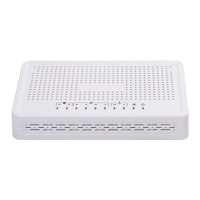ESR series service routers.ESR-Series. User manual
•
•
•
•
•
•
•
Step Description Command Keys
6 Set a list of keys for
authentication (optional).
esr(config-isis)#
authentication domain key
chain <KEYCHAIN>
<KEYCHAIN> – key list identifier, set by the
string of up to 16 characters.
7 Select the authentication
algorithm for the L1 layer
(optional).
esr(config-isis)#
authentication area
algorithm<ALGORITHM>
<ALGORITHM> – authentication algorithm:
cleartext – unencrypted password;
md5 – password is hashed by md5
algorithm.
8 Set the authentication
password for the L1 layer
(optional).
esr(config-isis)#
authentication area key ascii-
text { <CLEAR-TEXT> |
encrypted <ENCRYPTED-
TEXT> }
<CLEAR-TEXT> – password, set by the
string of 8 characters;
<ENCRYPTED-TEXT> – encrypted
password of 8 bytes (16 characters) in
hexadecimal format (0xYYYY...) or
(YYYY...).
9 Set a list of keys for
authentication (optional).
esr(config-isis)#
authentication area key
chain<KEYCHAIN>
<KEYCHAIN> – key list identifier, set by the
string of up to 16 characters.
10 Enable transmission of router
name to the LSP (optional).
esr(config-isis)# hostname
dynamic
11 Set the IS-IS process
operating level (optional).
esr(config-isis)# is-type
{<LEVEL>}
<LEVEL> – IS-IS protocol operation level:
level-1 – operate only on level 1;
level-1-2 – operate on levels 2 and 2;
level-2-only – operate only on level
2.
12 Set the type of metric to be
used in the IS-IS process
(optional).
esr(config-isis)#metric-style
{ narrow | wide | transition }
[<LEVEL>]
narrow— accepts and generates TLVs (on
network reachability) of the old type;
wide — accepts and generates TLVs (on
network reachability) of the new type;
transition — accepts and generates TLVs
(on network reachability) of the new and
old type;
<LEVEL> – IS-IS protocol operation level:
level-1 – operate only on level 1;
level-2-only – operate only on level
2.
13 Set the route priority for the
specified IS-IS process
(optional).
esr(config-isis)#preference
{<VALUE>}
<VALUE> – may take values [1..255].

